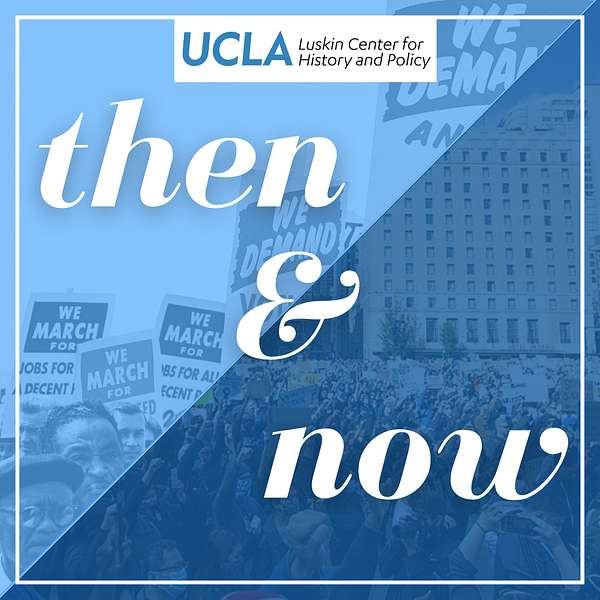
Then & Now
Then & Now connects past to present, using historical analysis and context to help guide us through modern issues and policy decisions. Then & Now is brought to you by the UCLA Luskin Center for History and Policy. This podcast is produced by David Myers and Roselyn Campbell, and features original music by Daniel Raijman.
Then & Now
How Mathematics Shaped the Great Grid of America: A Conversation with Amir Alexander
Welcome back to then & now! To kick off our 5th season, we are joined by Professor Amir Alexander, a historian of mathematics in UCLA’s Luskin Department of History. His latest book, Liberty’s Grid, examines how Founding Father Thomas Jefferson transformed early America into a mathematical landscape. Jefferson’s vision of an empty, gridded space was intended to create a framework for people to act freely. Alexander delves into the paradox: though this grid symbolized American ideals of freedom, it also reinforced hierarchies and constraints. Natural obstacles such as bodies of water or geological features, as well as Native Americans who had lived on the land for centuries, were perceived as obstacles in Jefferson's quest to overlay order on an unordered natural world. Over time, opponents of the Jeffersonian grid developed alternative visions of how to organize the American landscape, but we still see remnants of this system in the rigid grids of middle America and in cities such as New York City, particularly Manhatten. We reflect on how this story and the perception of ordering nature is relevant to us today.
Amir Alexander is an adjunct professor in the UCLA Meyer and Renee Luskin Department of History. Professor Alexander's work illuminates the deep interconnections between mathematics and its social, cultural, and political setting, and highlights the intertwined relationship between critical mathematical developments and broader historical trends that motivated these developments and gave them meaning and purpose. Professor Alexander has written multiple books on this topic, and his 2014 book, Infinitesimal: How a Dangerous Mathematical Theory Shaped the Modern World, was selected as a finalist for the Phi Beta Kappa Science Award in 2015.